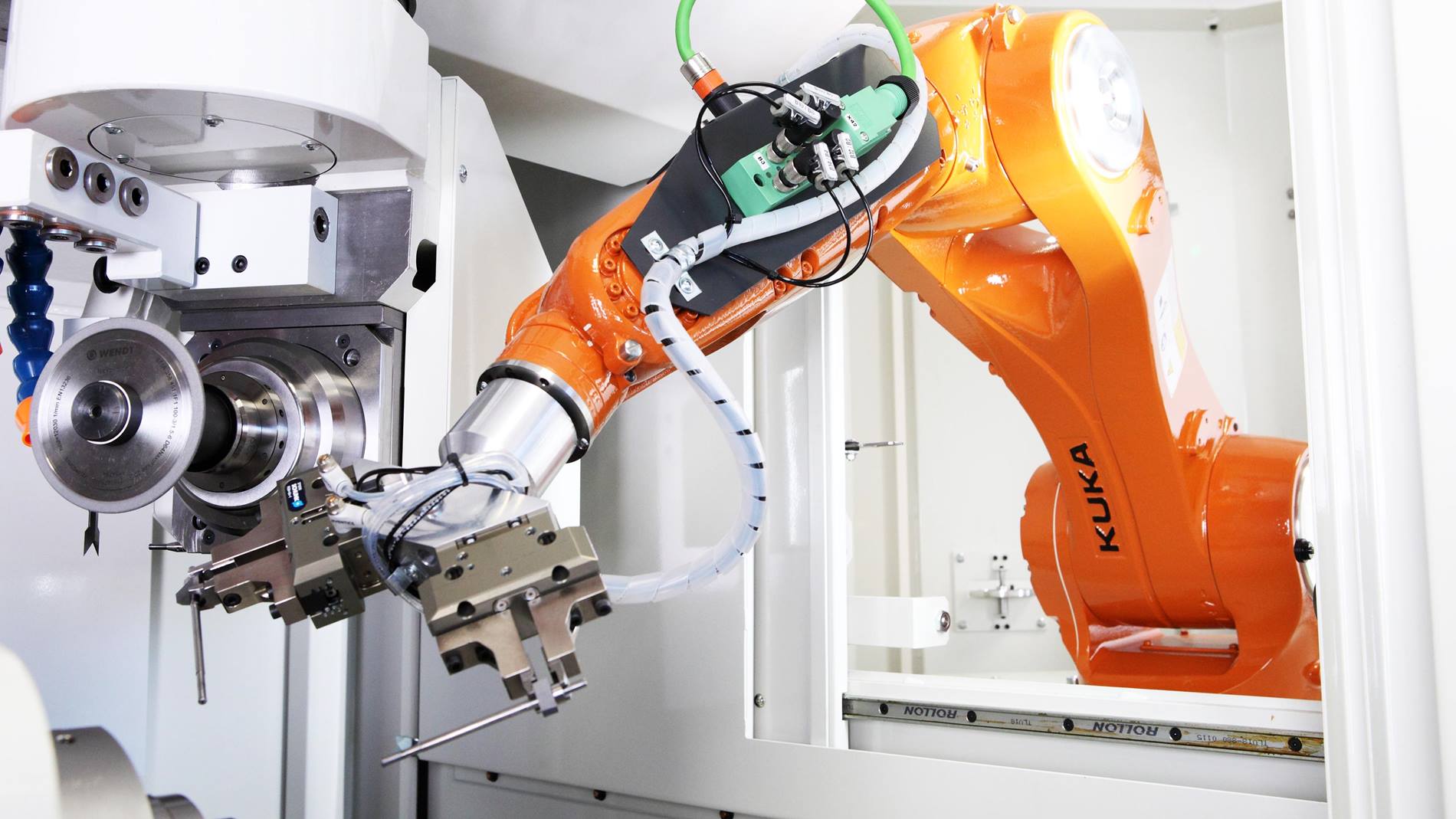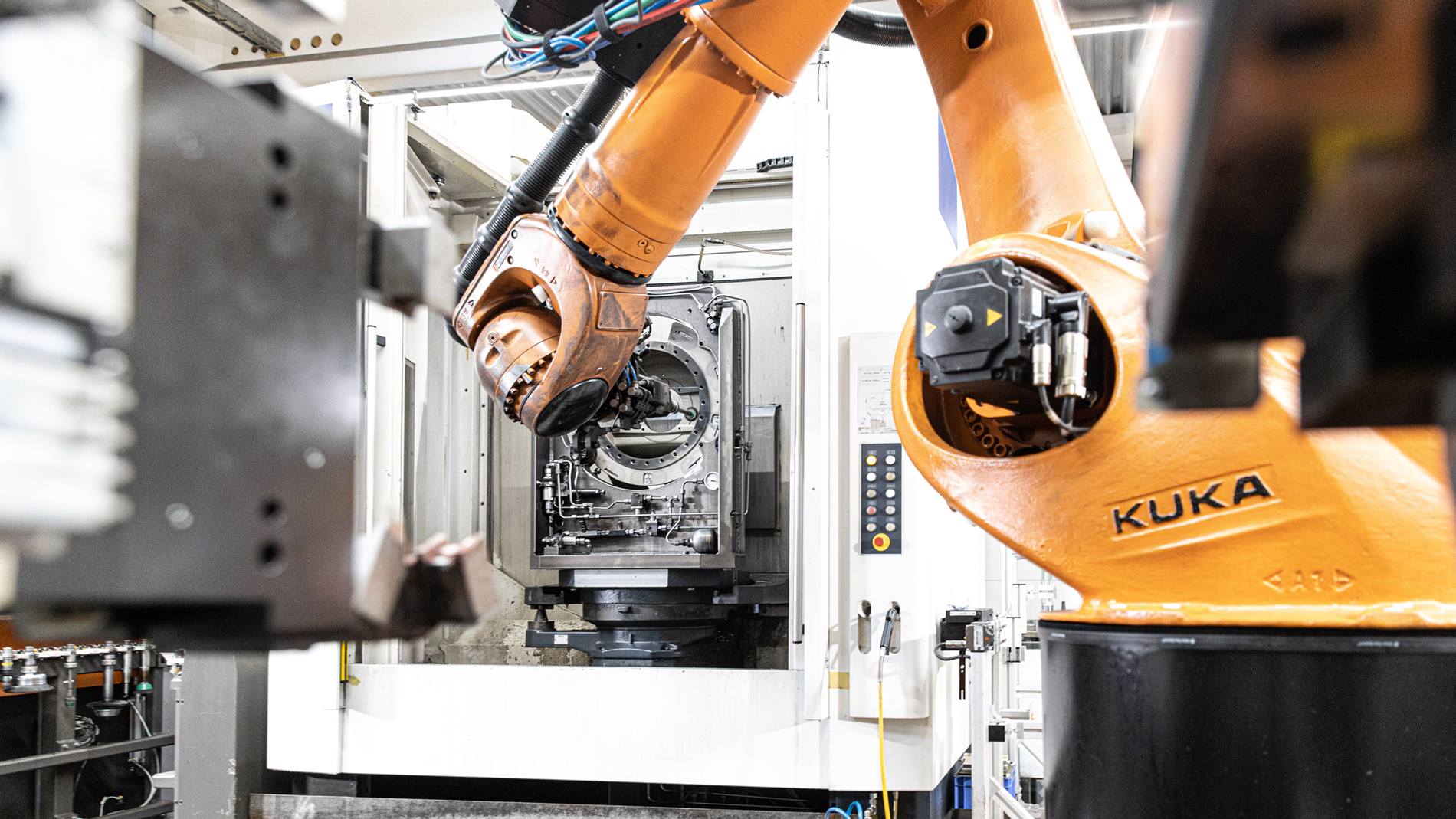Uncertainty about the type and quantity of production, individual production and batch size 1, shorter delivery times and a shortage of skilled workers do not make it easy for medium-sized companies in production. But in times of digitalization and networking, companies can meet these demands. Those who understand the challenges and find solutions for their individual situation gain clear advantages.
Comprehensive networking boosts productivity and improves workflow
A machine tool today works together with robots and humans. All participants constantly exchange information in order to deliver optimal results. The prerequisite for this is standardization in operation. In order to ensure the exchange, machine tools have to collect data and provide it via semantic interfaces. Only in this way can the machines be integrated into functionally linked systems at all. The exchange of data makes it possible to automate manufacturing processes.
Artificial intelligence replaces manual production processes
Today, open interfaces such as OPC-UA take these interactions to a new level: With the help of artificial intelligence (AI), the system independently plans material and tool requirements, transport or maintenance procedures, for example, and constantly transmits this information to all machines and robots involved. Previously, this could only be done manually.
Predictive maintenance by IOT
Thanks to continuous real-time data acquisition by IOT (Internet of Things) sensors on the machines, companies can easily obtain field data at the moment of the production process. This makes predictive maintenance possible. Deviations from the performance standard, individual inefficient process steps or wear processes are recorded directly:
-
Fixed maintenance intervals are a thing of the past because the system detects problems before they occur.
-
Defective components are thus replaced before their failure paralyzes the entire process. This reduces machine downtimes to a minimum, saves time, costs and resources and ultimately increases customer satisfaction.
Flexible manufacturing instead of rigid mass production
Increased customer expectations, increasingly complex workpieces and fluctuating order situations are often difficult for medium-sized companies to cope with. Many customers rely on a wider range of variants for their product portfolio – this only works with individual small and micro production or customer-specific mass production.
At the same time production costs and delivery times must not increase. This can be met only with one: flexibility. Agile manufacturing is the keyword. Agile manufacturing cells produce components and variants flexibly – if necessary in batch size 1. This increases process complexity enormously.
This is why the machine tool of the future will monitor the quality of its production autonomously and in real time.
Once a customer inquiry has been received, existing capacities and resources are planned in, and the required tools, raw materials and intermediates are clarified – intelligent networking makes it possible. Meanwhile, the customer follows the production status directly in order to request possible configurations.
Conclusion: The machine tool of the future will ensure greater efficiency and productivity through agile manufacturing and intelligent networking.
In this way, it will help SMEs to successfully master the challenges of Industry 4.0.














